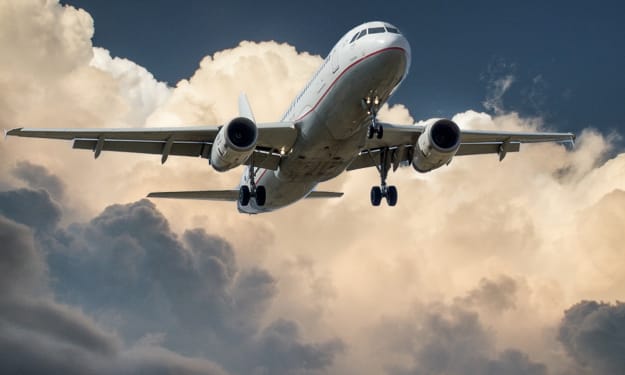
After the popularity of swimming in the sea as a health activity in Victorian Britain, the beach has transformed from a place for people to work and look for food to a place to relax and enjoy. Today's beaches are regularly portrayed on postcards as idyllic places with coconut trees, white sands, pretty girls in bikinis, loud kite surfers, and surfers riding the perfect wave. It's not a dangerous place. Millions of people around the world go to the beach for daily recreational activities such as vacationing and daily recreational activities such as surfing, swimming, fishing, sunbathing, shell collecting, running, walking dogs, shell collecting, sleeping and counting sand. enjoying. But the beach has another side. It's an eerie and totally dangerous aspect. Here are 10 of the most dangerous beaches in the world!
Port Saint Johns' Second Beach is an otherwise comfortable vacation destination on South Africa's illustrious Transkei coast. The family has been on vacation here for decades. However, in recent years, Second Beach has gained a reputation as one of South Africa's most dangerous beaches. With eight deadly shark attacks on surfers and swimmers in five years, Second Beach could be the most dangerous beach in the world for sharks. The species allegedly responsible for the fatal incident on the second beach is the bull shark, known as the bull shark in other parts of the world. Bull sharks can grow up to 2.5 meters and are known for their aggressive behavior. They are known to chew almost anything they find in the water, like tiger sharks.
Also at the top of the list of shark attacks is Newsmana Beach in Volsia County, Florida, USA. New Marna is a popular state beach with lots of parking. There are many surfers and ocean swimmers throughout the year, with an average of nine shark bites a year. As a seasonal herd of fry swims north along the Florida coast in an annual migration involving millions of animals, they are tracked by a variety of predators, including seabirds and sharks. Fortunately, most sharks chasing a herd of New Marna baitfish are also juveniles less than 2 meters (6 feet) and most of the bites, unlike encounters with larger sharks elsewhere. Is not fatal.
Recife's Boaviagen, in the tropical state of Pernambuco in northeastern Brazil, is also at the top of the list of dangerous beaches due to shark activity. Boaviagen is a very popular beach in the heart of the city of Recife, with a population of 2 million. And many of them embrace beach culture and participate in many beach activities such as surfing and swimming all year round. Over the last two decades, more than 50 shark attacks have been recorded on this beach, many of which are deadly. As a result, since 1999, Boa Viagem has virtually banned surfing and swimming in waters deeper than 1 meter (39 inches). Lifeguards are specially trained to deal with shark injuries, and most incidents result from bull and tiger sharks. Both large sharks are known to be aggressive species. There has been long-standing debate among experts on how to reduce the number of sharks in Boaviagem, but there is no clear plan other than keeping people away from the water.
Sandy Beach, on the Kaiwi coast in southeastern Oahu, is known to the locals as it causes strong coastal waves and many injuries to both visitors and locals due to these strong waves. Known as "Broke Neck Beach". Sandy Beach receives near-constant sea swells from the northeastern trade winds. This is a short-period wave that breaks into a hollow, powerful tube on a steep sandy beach. Known for its excellent bodysurfing and bodyboarding conditions, Sandy's attracts many locals and tourists all year round. Most are just bruises and abrasions, but there are also very serious cases such as neck fractures, pelvic bones and spinal cord injuries. Sandy Beach has the most highly trained and experienced lifeguards in the cities and counties of the Honolulu system and is often required to use rescue training and first aid skills in real-world emergencies.
Also known as "Tannels Beach" after the offshore surf spot, McA Beach is where 13-year-old Bethany Hamilton paddles his surfboards to catch the waves with his friends on a sunny day in late October 2013. After a wave, she was rowing back to her launch site. At that time, a large tiger shark, estimated at 4 meters (12 feet), emerged from the depth and bit her left arm cleanly from her shoulder. The shocking shark encounter was not the first encounter on the beach, long known for large tiger sharks among regular surfers. But it was by far the most famous. Attacks and international media coverage have driven Hamilton to international fame as a "shark girl." The swift action of her friends to manage blood loss and treatment at a nearby hospital by competent medical staff saved her life that morning. Hamilton became a top professional surfer, her wife and her mother in books and movies about her life after the attack.
The town of Esperance in southwestern Western Australia is an ideal place to live, work and have a family in every aspect. The Indian Ocean has beautiful white sands and perfect surfing waves. Most people have jobs and hobbies related to the sea. Activities centered around the sea, the center of both work and play, are enjoyed by everyone, from locals to the small but economically important visitor industry. Three deadly shark attacks on surfers and divers in just three years stretched the bond between family and friendship and, in some cases, irreparably destroyed in this close community. With all three attacks from great white sharks, much of the community has mitigated from shark nets to motion-sensing drum lines, complete removal of problematic sharks, and official warnings to keep sharks out of the water. Seeking a strategy. It exists.
Before 2011, the beach in front of the nuclear plant at Okuma was a popular surfing area frequented by surfers, fishermen, and other beachgoers.On March 11, 2011, the area was rocked by a massive offshore earthquake measuring 9.0 on the Richter scale, the largest earthquake ever recorded in this earthquakeprone country. The massive Tohoku quake generated a series of tsunami waves that rushed inland over a wide area of the region, inundating everything in their path of destruction.In the path of the tsunami waves was the Tokyo Electric Power Company (TEPCO) nuclear power station at Okuma, in Fukushima Prefecture, located immediately behind the beach. One of the massive waves, estimated at over 15 meters (50 feet), breached the protective concrete wall around the reactors and flooded the diesel generators supplying cooling water to them. This precipitated a partial meltdown of the reactor cores and a release of radioactivity into the atmosphere.Ten years after the earthquake and nuclear disaster, the entire area around the TEPCO reactors is still an exclusion zone. There are no surfers, fishermen, or other beachgoers allowed in the area as radioactive water from the crippled reactors is slowly being released into the Pacific Ocean. This area may remain a restricted area for decades to come.
Imperial Beach is an otherwise pleasant beach town south of San Diego in California, approximately 10 kilometers (6 miles) north of the international border with Mexico. Long popular with surfers for consistent and powerful waves, Imperial Beach also hosts many fishermen and other beachgoers who enjoy the Pacific Ocean as residents or visitors.What has made the town and its beachfront infamous in recent decades is not located in the town itself, nor even in the United States.There is a massive wastewater treatment plant just over the border in Mexico that handles all the wastewater from the city of Tijuana, an urban metropolis of over two million people, which has seen a huge increase in population since the 1950s. The plant is, by all estimates, far over the capacity for which it was designed, and colossal amounts of raw sewage and industrial pollutants are regularly discharged into the Pacific Ocean.Prevailing ocean currents in the area flow from south to north, carrying as much as 140 million liters (35 million gallons) per day of toxic effluent across the international border and into Imperial Beach, the first populated area north of the border. Town officials regularly post warnings not to go into the water. However, there is little they can do to control or eliminate the discharge of the noxious discharge affecting their beaches, as it takes place in another country.To alleviate a portion of the obvious public health hazard, regardless of the source, funding has been allocated, and steps are being taken to divert and treat some of the Mexican wastewater in the U.S. before discharge.
The beautiful and chic French island of Reunion in the Indian Ocean has had a shark plague since 2011. There were 19 shark cases that killed 7 people. The incident destroyed the island's important tourism industry. Since then, surfing has become so dangerous everywhere on Reunion Island that many surfers have left the island and moved to mainland France or Australia. Several causal hypotheses have been put forward regarding the surge in shark attacks on Reunion. Most of them occurred on the west coast of the island and were due to an increase in the number of aggressive bull and tiger sharks. Prior to 2011, there were few, if any, shark incidents on the West Coast. There is no causal hypothesis to explain the increase in shark numbers and activity since 2011. B. The establishment of a no-take zone on the west coast is scientifically proven. Municipalities have tried various solutions to mitigate shark problems, from culling large sharks to shark nets to banning surfing anywhere on the island, but with limited effectiveness. .. Surfing, bodyboarding and swimming in the ocean are still risky activities on Reunion Island.
South Bay is a tourist city in the Kenting region of southern Taiwan. There are many hotels and restaurants in the area and it is very popular for people all over the island to spend their vacation. Nanwan has a very nice sandy beach where you can buy or rent all kinds of beach amenities such as umbrellas, parasail rides, tubing, food, drinks, jet skis, massages, children's beach toys and surfboards. Give it a name and someone will sell or rent it. The South Bay can be very crowded and one of the dangerous factors on this beach is that the use of jet skis and other personal watercraft is not fully regulated. A nearby swimmer. In addition, most visitors to South Bay Beach have little "sea sensation", wave experience, or swimming ability, so many unfortunate drowning even in calm waters where there is no wave or other sea hazard. Will lead to. Another risk factor is that the South Bay is in a good position to receive seafloor waves from seasonal typhoons, which makes good surfing conditions, but very dangerous for many tourists. Many of the people on this beach have no experience with ocean waves, and the presence of large, powerful bottom waves often leads to more unfortunate drowning.
About the Creator
silviu69
Subscribe to my stories!
Show your support and receive all my stories in your feed.
Enjoyed the story? Support the Creator.
Subscribe for free to receive all their stories in your feed. You could also pledge your support or give them a one-off tip, letting them know you appreciate their work.





Comments
There are no comments for this story
Be the first to respond and start the conversation.